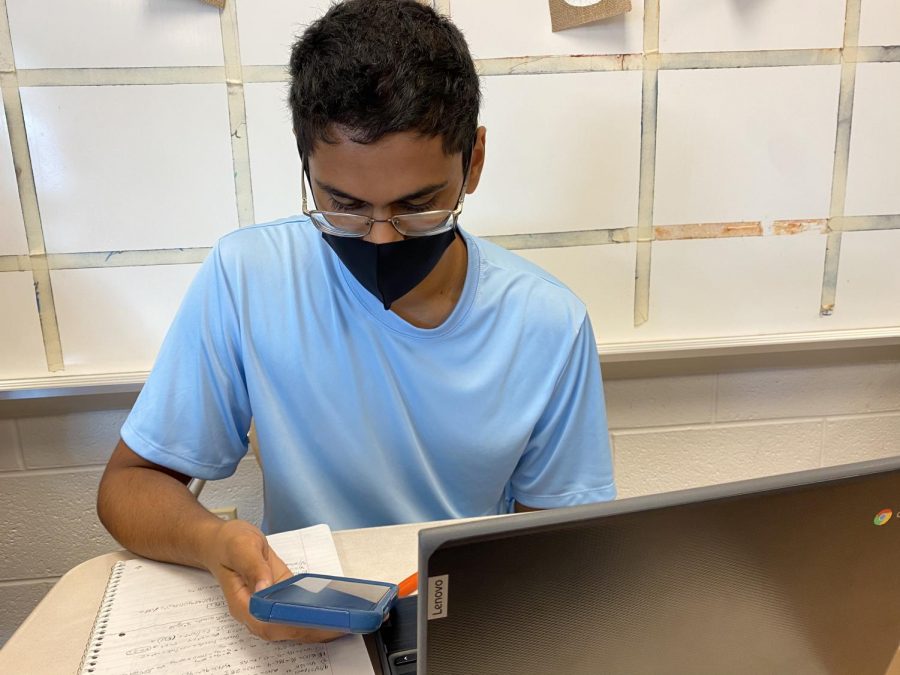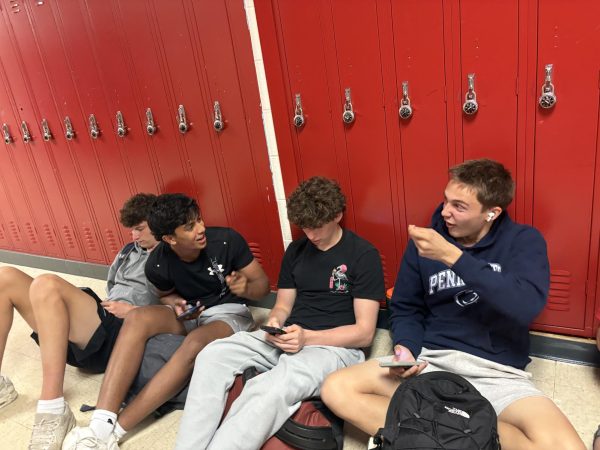Return to traditional full-day schedule is jarring wake-up call; addition of daily advisory period draws mixed opinions
Senior Jay Kannan takes advantage of the advisory period to do school work.
After a fully virtual year of four days of classes each week for one hour each, the traditional 7:45 a.m. to 2:30 p.m. day has returned for the first time since March 2019.
Students have mixed feelings about the shift. “The schedule change was surprising to me at first. After the first week it felt easier and I adjusted to the schedule more. I don’t enjoy the early wake up but I’ve gotten used to it,” sophomore Dylan Linton said.
As opposed to waiting until 9 a.m. for class to start, students must now be up earlier to get ready for the school day. Each class is 42 minutes long, as opposed to the four, one-hour long classes that composed last year’s schedule.
Meanwhile, the advisory period takes place between the students’ fourth period and lunch, making for conflicting opinions regarding the usefulness of this period. One benefit is that students have the opportunity to meet with teachers. “At first I felt like Wootton was finally listening to us because this is as close as they can get to last year’s check ins,” senior Jay Kannan said.
In addition to the benefit of being able to meet with teachers, the advisory period allows students to engage in socialization with other classmates and to have independent time to finish outstanding assignments. This period is also used for social and emotional wellness lessons.
Even with all these advantages, it is still apparent that students feel otherwise about this period. “I would make lunch longer because lunch is actually useful to me. It’s a time where I can either see a teacher or hang out with friends and chill out,” Linton said.
Furthermore, the social and emotional lessons seem to spark little involvement and dialogue among students. During these social and emotional lessons, which also appeared in homeroom classes last year, teachers typically present a slideshow with videos and other pieces of content related to a particular subject such as mental health. “I think sometimes the lessons want things out of [the students] that [they] do not feel comfortable sharing. I think the lessons are good but it makes [them] sometimes hard to do,” teacher Lea Clark said.
While there is content available for lessons, it has become clear that the lack of interest from students does not make these lessons conducive to learning. Additionally, it appears that they allow less time for students to engage in completing schoolwork or getting extra assistance from a teacher.
In the end, the new schedule represents a shift back to a pre-pandemic norm. However, the implementation of an advisory period that borders on the lunch period has shown itself to have its share of advantageous applications, but oftentimes futile lesson plans. “Part of me thinks it’s good to have a catch up time to do homework, the other part of me thinks it extends the day and makes it feel longer. Ultimately I think it’s a positive thing,” Clark said.
Your donation will support the student journalists of Thomas S. Wootton High School. Your contribution will allow us to purchase equipment and cover our annual website hosting costs.
Carter Jones is a 2022 graduate.







